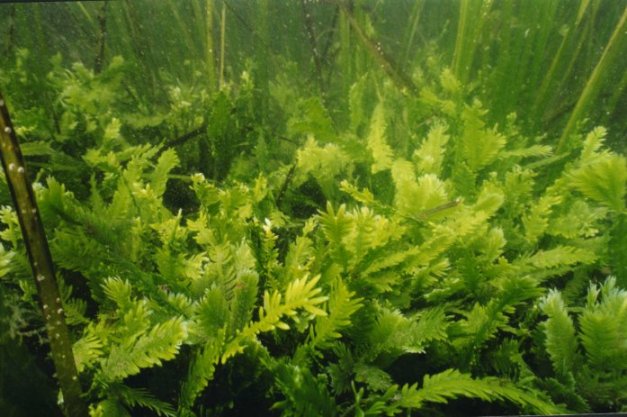4. Invasive Species in the Ocean
Transport of marine invasive species (3/3)
4. Aquarium trade
Aquatic Species from aquarium trade have been released into the sea both, intentionaly and unintentionaly. The home aquarium trade and increased interest in garden ponds have in some parts of the world greatly increased the importation and culture of exotic ornamental species. There are cases of hobby aquarists who dispose of unwanted fish by introducing it into rivers or directly into the sea.
Unintentional releases may for example occur when fish escape through holes in net pens.

Photo: Allentchang / Wikimedia Commons
One of the most well known examples with far reaching consequences has been the unintentional release of Caulerpa taxifolia, a species of seaweed (a type of algae) from the Oceanographic Museum of Monaco directly into the Mediterranean Sea. In 1984 it was first recorded covering an area of just one square metre off Monaco. Today it covers thousands of hectares along the coasts of France, Spain, Italy and Croatia (IMO). It replaces native sea grasses and limits natural habitat for larval fish and invertebrates.

Photo: NOAA / Wikimedia Commons
Caulerpa taxifolia is native to the Indian Ocean. It has been commonly used as ornamentation in aquarium installations around the world.
5. Live seafood trade
The seafood industry deals with live, fresh, frozen, and processed freshwater and marine organisms such as finfish, crabs, lobsters, clams, mussels, or oysters. Non-native live and fresh seafood that is dumped or released either accidentally or intentionally into local waters may introduce diseases (such as viruses and bacteria), parasites, and other hitchhikers into the environment. Introduced diseases and parasites may cause native species to become ill, while introduced live seafood and their hitchhikers may become invasive as they reproduce and establish self-sustaining populations that compete with native species.

Photo: John Everett, Oceansart.us / Marine Photobank
A well-known example of an invasive food fish is the northern snakehead fish (Channa argus). Snakeheads are large predatory fish native to Eastern Asia, and considered a delicacy in China, Vietnam, and Thailand. There are 30 species of snakehead fish, many of which are warm water species which have been sold as aquarium pets in the United States. A few species are able to survive in colder climates.

Photo: NBII
In May of 2002, several snakehead fish were found in the Potomac River in Maryland (U.S. Fish and Wildlife Service 2002). Since then hundreds of snakeheads have been found in lakes and rivers along the east coast and in the Midwest, including New York City and Boston. It is thought that they were imported to the US, purchased as seafood or as pets, and then accidentally or intentionally introduced into rivers and ponds.
